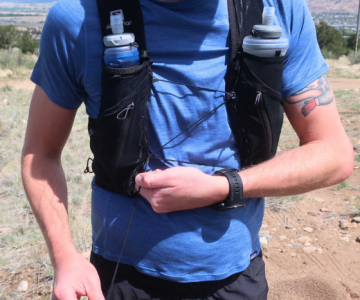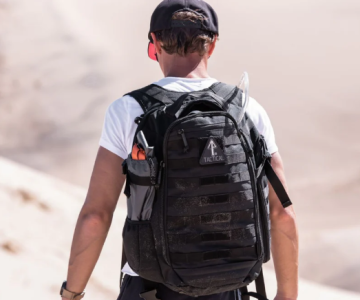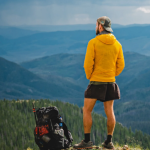If you’re venturing into ultralight backpacking, one of your main goals will be reducing your base weight without sacrificing comfort or performance. While ultralight gear is often seen as a luxury, it can be essential for those looking to push their limits, whether you’re going for a multi-day hike or simply trying to streamline your gear. But how do you go about picking the right ultralight gear? Here’s your ultimate guide to selecting the best equipment for going fast and light.
Understand Your Gear as a System
When selecting ultralight gear, the most important concept is to treat your kit as a whole system. It’s not just about swapping one item for another; instead, you need to ensure that all of your equipment works together seamlessly. Your tent, sleeping bag, stove, pot, and even your water filtration system must complement one another to make your hike easier and more efficient. For example, your sleeping pad and sleeping bag should work in tandem to keep you warm, while your stove and cookware need to match in terms of size and function. Before embarking on a long trip, it’s always a good idea to test your new gear together at home.
Look for Versatility in Your Gear
When packing light, avoid carrying items that are overly specialized. Ultralight backpacking is all about efficiency, so focus on gear that serves more than one function. For instance, your pot can double as a bowl, and trekking poles can serve as tent supports. A poncho can act as both a rain cover and a groundsheet. Another great multi-purpose item is your phone, which can be used for navigation, entertainment, and photography. By prioritizing versatile gear, you reduce the number of items you carry, lightening your load.
Start with the Big Four: Tent, Sleeping Bag, Sleeping Pad, and Pack
To really reduce your base weight, begin by upgrading your four largest and heaviest pieces of gear: your tent, sleeping bag, sleeping pad, and pack. For ultralight backpacking, keeping these items under 6 pounds is a great goal. Here’s a comparison of how much weight you can save by upgrading each:
- Sleeping Bag: Switching from a synthetic 20° sleeping bag (2 lb 14 oz) to an ultralight down sleeping bag (1 lb 6 oz) can save you over a pound.
- Tent: Moving from a mid-weight 2-person dome tent (3 lb 2 oz) to an ultralight A-frame tent (1 lb 2 oz) saves you a full pound.
- Sleeping Pad: Upgrading from a self-inflating pad (2 lb 5 oz) to an ultralight air pad (13 oz) can shave off another 1 lb 8 oz.
- Pack: Switching from a fully featured 40-liter pack (3 lb) to an ultralight 40-liter pack (1 lb 4 oz) saves you another 1 lb 12 oz.
These four items alone can save you almost 6 pounds, which brings you much closer to an ultralight base weight.
Tent or Shelter: Choose the Right Option for Your Needs
Your shelter is another area where you can significantly reduce weight. The type of shelter you need depends on your hiking style, base weight goals, and whether you’ll be sharing your shelter with a hiking partner. If you’re hiking solo, a trekking pole tent or tarp may be your best bet. However, if you’re sharing, a two-person tent can be divided between two hikers, halving the weight for each person.
For example:
- Big Agnes Copper Spur UL2: A 2-person ultralight dome tent weighing 2 lb 14 oz.
- Zpacks Duplex Tent: A 2-person trekking pole tent weighing 1 lb 5 oz.
- Zpacks Flat Tarp: A 8.5’ x 10’ flat tarp weighing only 12.5 oz.
Tarp setups are great for reducing weight but may not offer as much protection from the elements as tents. However, you can always supplement a tarp with a bivvy bag for added protection.
Sleep System: Focus on Comfort and Warmth
Your sleep system plays a crucial role in ensuring a comfortable rest during your hike. It consists of your sleeping bag or quilt, sleeping pad, and sleeping clothes. When upgrading, consider the following:
- Sleeping Bag or Quilt: Down-filled sleeping bags are much lighter and more compressible than synthetic bags. A high-quality down bag can save you a significant amount of weight.
- Sleeping Pad: Air pads are generally more comfortable and lighter than self-inflating pads, though they come at a higher cost. Closed-cell foam pads are less comfortable but offer excellent durability and are more affordable.
- Insulation: When selecting your pad, make sure it has an adequate R-value to keep you insulated from the cold ground. For colder conditions, you may want a sleeping pad with an R-value of 4.8 or higher to ensure warmth.
Choose the Right Footwear
Footwear plays an essential role in ultralight backpacking, especially when you’re carrying less weight. While heavy hiking boots are traditionally preferred for their ankle support, ultralight hikers tend to favor trail runners. These provide a balance of comfort, speed, and performance. For hikers who need more support, hiking shoes offer a middle ground between trail runners and boots, providing more durability and protection.
For terrain that requires more grip, approach shoes with sticky rubber soles are ideal. These shoes provide better traction on technical terrain and are perfect for hikes involving scrambling.
Stove and Cookware: Save Weight Without Sacrificing Functionality
When it comes to cooking, ultralight backpackers often face the dilemma of balancing weight and functionality. Alcohol stoves are the lightest option, but they lack the flame control and fuel efficiency of canister stoves. Integrated stove systems, which combine the stove and pot into one unit, are heavier but more efficient. For ultralight setups, compact canister stoves offer a good compromise, providing flame control and wind resistance while still keeping weight low.
One great strategy to save weight is to eat directly from your cooking pot, eliminating the need for a separate bowl. Choose a pot that’s easy to scoop food out of, and you can reduce both weight and cleanup time.
Pack Size: Choose the Right Volume for Your Gear
When selecting a backpack, the weight savings can be just as significant as the gear inside it. Traditional packs with many compartments can weigh between 3 and 5 pounds, while ultralight packs typically weigh between 1 and 2 pounds. A 35 to 40-liter pack is usually sufficient for ultralight backpacking, though some experienced hikers can use a smaller 30-liter pack once they’ve streamlined their gear.
Final Thoughts: Stay Light, Stay Smart
Ultralight backpacking is about maximizing efficiency and minimizing unnecessary weight. By carefully selecting gear that serves multiple purposes, fits well with your other equipment, and offers the right balance of comfort and protection, you can drastically reduce your pack weight. Whether you’re aiming for an ultralight setup or just trying to shave a few pounds off your gear, following these tips will help you make informed decisions and enjoy a more comfortable, efficient backpacking experience. Happy hiking!




